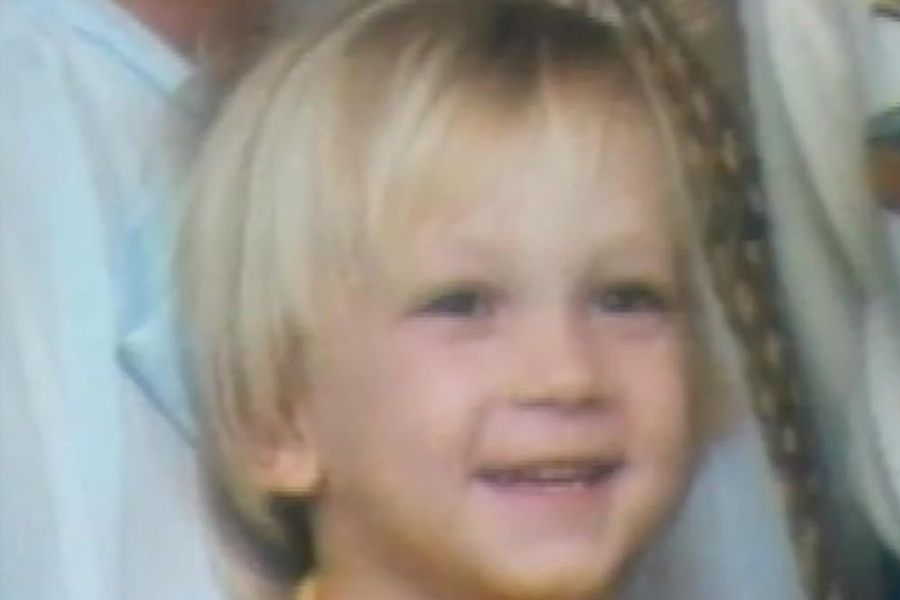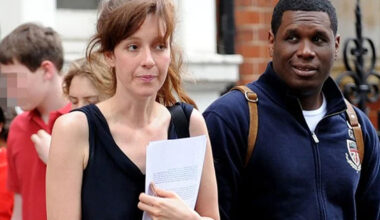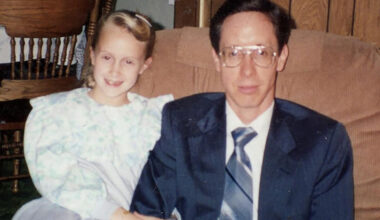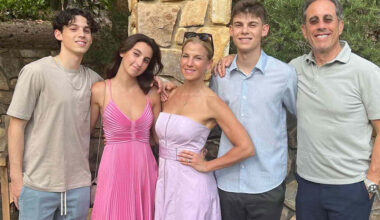Basic Information
| Field | Detail |
|---|---|
| Full name | Stephen Daniel “Danny” Downs |
| Also known as | Stephen “Danny” Hugi (after adoption) |
| Birth year | 1979 (reported) |
| Notable event | Survivor of the May 19, 1983 shootings involving his mother, Diane Downs |
| Injury | Paraplegia; paralysis resulting from gunshot wounds |
| Mother | Diane Downs |
| Legal father | Steve Downs |
| Adoptive parents | Fred Hugi and Joanne Hugi |
| Siblings | Christie Ann (survivor), Cheryl Lynn (deceased) |
| Half-sibling (maternal) | Daughter born via surrogacy in 1982; adopted by another family |
| Public presence | Lives privately; minimal public profile |
| Residence | Not publicly disclosed |
Early Years and Family Context
Stephen Daniel Downs, known to family and reporters as Danny, entered a complicated world in 1979. He was the youngest of three children born to Diane and Steve Downs: Christie arrived in 1974, Cheryl in 1976, and Danny in 1979. The family’s life would later be viewed almost exclusively through the lens of a notorious criminal case, but before that, the children were simply kids—school, games, sibling quarrels, and the unremarkable milestones of early childhood.
By 1982, the family’s circumstances had grown more intricate when Diane acted as a surrogate and delivered another child, who was adopted by an unrelated family. The home environment surrounding the Downs family was later scrutinized in courtrooms and news broadcasts, but for the children, the earliest memories were those of ordinary days.
May 19, 1983: The Night That Changed Everything
On May 19, 1983, a drive on a dark Oregon road turned into one of the state’s most infamous crimes. The three Downs children—Christie, Cheryl, and Danny—were shot. Cheryl, just 7 years old, died. Christie and Danny survived, though with life-altering injuries. The aftermath reshaped every part of the siblings’ future.
Danny’s injuries left him paralyzed, a sudden and permanent shift for a child barely out of toddlerhood. Hospitals, rehabilitation, specialist appointments—his life’s calendar was redrawn overnight. The case quickly moved into the courts. In 1984, Diane Downs was convicted of murder and attempted murder, a verdict that reverberated across headlines nationwide. The surviving children were placed under state care and sheltered from the storm of attention that followed.
Medical Recovery and Courage
Danny’s recovery was not a season but a journey—more marathon than sprint. The medical reality was stark: paraplegia, with mobility and independence requiring equipment, therapy, and adaptation. Yet what stands out in accounts of his early years after the shooting is a quiet resilience. Children adapt with a fierceness adults sometimes forget, and Danny did what many children do in the shadow of trauma—he learned new ways to move, to play, to laugh, and to be a kid again.
Therapy milestones replaced sports trophies; progress was measured in inches rather than miles. Still, those inches mattered. They added up to a life with structure, care, and the possibility of normalcy under new rules.
Adoption and a New Home
In 1986, a profound change brought stability: the Lane County prosecutor, Fred Hugi, and his wife, Joanne, adopted the two surviving Downs children. Christie and Danny took the Hugi name in many contexts and gained a home defined not by headlines, but by routines, school calendars, and privacy. For children thrust into the national spotlight, the Hugis’ home acted as a harbor.
This adoption shaped Danny’s future more than any single medical device or therapy plan. A steadfast family foundation allowed him to grow up with protection from persistent media curiosity and to begin adulthood without the constant echo of courtrooms and cameras.
Growing Up Out of the Spotlight
Christie and Danny’s adult lives have been kept private by design. Public reporting focuses on the case itself; details of careers, addresses, and finances remain off-limits. That privacy is part boundary, part healing. What is known is simple and significant: they built lives largely away from public view, stepping out only when the tide of true-crime retrospectives rolled back in with inevitable “where are they now?” questions.
Danny’s path, informed by disability and trauma, is not defined by them. Like many survivors, he occupies a space where resilience is ordinary and everyday. The world sees headlines; the individual experiences commitments, friendships, and routines that never make the news.
Media, Memory, and Boundaries
The story of the Downs family is retold again and again—books, documentaries, evening specials, and online essays. Yet amid all the retellings, the most human truths are often the smallest: two children grew up, one was lost, and a set of parents by choice stepped in when it mattered most. Public memory tends to flatten complexity, but the family’s lived experience resists that flattening. Boundaries matter. Privacy matters. And for Danny, who did not choose the spotlight, the right to live quietly is not just reasonable—it’s essential.
Timeline of Key Events
| Year | Event |
|---|---|
| 1974 | Birth of Christie Ann Downs |
| 1976 | Birth of Cheryl Lynn Downs |
| 1979 | Birth of Stephen Daniel (“Danny”) Downs |
| 1982 | Diane gives birth as a surrogate; the infant is adopted by another family |
| 1983 (May 19) | The shooting of the Downs children; Cheryl dies; Christie and Danny survive |
| 1984 | Diane Downs is convicted of murder and attempted murder |
| 1986 | Adoption of Christie and Danny by Fred and Joanne Hugi |
| 1987 | Diane escapes custody briefly and is recaptured; security measures around the children increase |
| 1988–present | Occasional media retrospectives; Christie and Danny continue life outside the public eye |
Family at a Glance
| Relationship | Name | Notes |
|---|---|---|
| Mother | Diane Downs | Convicted in 1984; incarcerated |
| Legal father | Steve Downs | Kept a low public profile after the case |
| Sister | Christie Ann | Survived the 1983 shooting; later adopted by the Hugis |
| Sister | Cheryl Lynn | Died in 1983 |
| Half-sibling (maternal) | Daughter born 1982 | Adopted by another family; later came forward publicly as an adult |
| Adoptive father | Fred Hugi | Lane County prosecutor who tried the case |
| Adoptive mother | Joanne Hugi | Raised Christie and Danny |
The Human Frame: Injury, Identity, and Independence
Numbers matter in this story—1983, one life lost, two lives remade—but the deeper narrative lies between the digits. Injury rearranged Danny’s relationship to his body and the built world. Curbs, doorways, and school hallways became arenas where design and determination met. Identity, meanwhile, stretched beyond the labels of victim or survivor. Beneath those labels beats a life with its own rhythm: humor, habits, frustrations, aspirations.
The social reality is equally complex. People with visible disabilities often contend with unwanted attention. Danny’s experience was compounded by infamy. Privacy isn’t just a preference; it’s a protective layer—like bark on a tree—allowing growth underneath.
What Remains Public—and What Doesn’t
Much of what the public knows is anchored to the case file and the trial record. We know the core facts: the night of the shooting, the convictions, the adoption that followed, the resilience of two children navigating injury and grief. We do not know—and are not entitled to know—the particulars of Danny’s adult life: where he lives, how he earns, who he loves, what he pursues day to day. That is as it should be.
The story that belongs to the public has edges and endpoints. The rest belongs to the person at its center. In that private space, the arc of a life bends not toward headlines, but toward the ordinary victories that make a life whole.
FAQ
Who is Stephen Danny Downs?
He is the youngest child of Diane Downs and a survivor of the 1983 shootings in Oregon. He lived through severe injuries and later grew up in the care of his adoptive parents, Fred and Joanne Hugi.
What happened on May 19, 1983?
All three Downs children were shot; Cheryl died, while Christie and Danny survived with serious, lasting injuries. Their mother, Diane Downs, was later convicted.
What injuries did Danny sustain?
He suffered gunshot injuries that left him paralyzed. His recovery involved long-term medical care and rehabilitation.
Who adopted Danny after the trial?
He and his sister Christie were adopted by prosecutor Fred Hugi and his wife, Joanne, in 1986. They provided a stable, private home.
Did Danny testify at the trial?
No. His sister Christie, older and recovering from her own injuries, gave pivotal testimony.
What is known about Danny’s adult life?
He has maintained a private life with minimal public exposure. Few specifics about his career or residence are publicly disclosed.
Did Diane Downs ever escape from custody?
Yes, she escaped briefly in 1987 and was recaptured. Security measures around the children increased afterward.
Did Danny change his last name?
Following adoption, he has been referred to publicly both as Downs and as Hugi. Usage varies by context and publication.
How many siblings did he have?
He had two sisters, Christie and Cheryl; Cheryl died in 1983. There is also a maternal half-sibling born via surrogacy in 1982 who was adopted by another family.
Why is there so little public information about him today?
After their adoption, the surviving children lived outside the spotlight by choice and design. Respect for their privacy has largely held over the decades.



